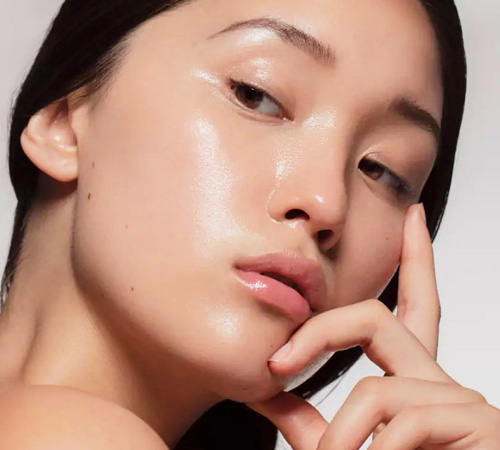
Facial Fat Grafting
Table of ContentsToggle Table of ContentToggle
What Is Facial Fat Transfer?
- Harvesting Fat: The surgeon first identifies an area with excess fat, typically from areas like the abdomen, thighs, or buttocks. Liposuction is then used to extract the fat cells gently.
- Purification: The harvested fat is processed to purify it, removing any impurities or
excess fluids. This step ensures that only healthy fat cells are used for the transfer. - Injection into the Face: The purified fat is then carefully injected into specific areas of the face that may have lost volume or appear sunken. Common target areas include the cheeks, temples, under the eyes, and the jawline.
- Sculpting and Contouring: The surgeon sculpts and contours the face using the transferred fat to achieve a natural and harmonious result. This process can help
address signs of aging, such as wrinkles and hollow areas. - Recovery: Patients may experience some swelling and bruising after the procedure, but these typically subside over time. The recovery period varies from person to person.
What Are the Benefits of Facial Fat Grafting?
- Natural-Looking Results: Since the transferred material is the patient’s own fat, the results tend to look and feel natural. The fat integrates with the existing tissues,
providing a harmonious and balanced appearance. - Restoration of Volume: Aging can lead to a loss of facial volume, resulting in hollowed areas and sagging skin. Facial fat grafting helps restore volume to these areas, giving the face a more youthful and refreshed look.
- Long-Lasting Results: While some of the initially transferred fat may be reabsorbed by the body, a significant portion usually establishes a permanent blood supply and remains in place. This can lead to long-lasting results compared to other temporary
fillers. - Improved Skin Quality: The presence of fat beneath the skin can enhance skin quality. Fat contains stem cells and growth factors that contribute to improved skin texture, hydration, and overall health.
- Customized and Precise Contouring: Facial fat grafting allows for precise and
customized contouring. Surgeons can strategically inject fat to address specific areas of concern, sculpting the face to achieve the desired aesthetic outcome. - Minimized Risk of Allergic Reactions: Since the transferred material is the patient’s own fat, there is a reduced risk of allergic reactions or rejection. This makes facial fat grafting a safe option for many individuals.
- Versatility: Facial fat grafting is a versatile procedure that can be used to address various facial concerns, including sunken cheeks, under-eye hollows, upper eyelid deformities, nasolabial folds, and more. It can be tailored to meet the unique needs and goals of each patient. Dr. Avila has unique training and experience with facial fat grafting to the area around the eyes and face.
What Are the Risks of Facial Fat Grafting?
- Asymmetry: Achieving perfect symmetry can be challenging, and there is a risk of subtle differences between the two sides of the face.
- Fat Resorption: Some of the transferred fat may be reabsorbed by the body over time. While a portion of the fat usually establishes a permanent blood supply, the extent of fat retention can vary among individuals.
- Infection: Any surgical procedure carries a risk of infection. Strict adherence to sterile
techniques during the harvesting and injection processes can minimize this risk. - Bruising and Swelling: It is common to experience bruising and swelling after facial fat grafting. These are typically temporary and resolve on their own during the recovery period.
- Necrosis: In very rare cases, there is a risk of fat cell death (necrosis) in the injected areas. This can result in lumps or irregularities. Proper injection techniques and patient selection can help minimize this risk.
- Scarring: While fat grafting involves small incisions, scarring is generally minimal. However, individuals may vary in their tendency to develop scars.
- Overcorrection or Undercorrection: Achieving the desired level of correction can be challenging, and there is a risk of overcorrection (excessive volume) or undercorrection (inadequate volume). Additional sessions may be needed to fine-tune the results.
- Allergic Reactions: Although the use of the patient’s own fat reduces the risk of allergic reactions, there is always a small risk associated with anesthesia or other components of the procedure.
- Persistent Swelling: In some cases, persistent swelling may occur, affecting the final appearance of the results. This can be addressed with proper post-operative care and follow-up.
- Need for Touch-Up Procedures: Over time, the face undergoes natural changes, and touch-up procedures may be desired to maintain optimal results.
It is crucial for patients to choose a board-certified and experienced surgeon and to follow pre-operative and post-operative instructions diligently to minimize the risk of complications. Dr. Sarah Avila is a double board-certified oculoplastic surgeon who has specialized training of facial fat transfer to the areas around the eyes and face.
Am I a Good Candidate for Facial Fat Grafting?
Aesthetic Goals: Facial fat grafting is ideal for individuals seeking to restore volume, improve facial contours, and achieve a more youthful appearance. If your primary concerns involve volume loss, hollow areas, or facial asymmetry, fat grafting may be a good fit.
Overall Health: Your general health plays a crucial role in determining your eligibility for facial fat grafting. You should be in good overall health, with no active infections or medical conditions that may increase the risk of complications.
Realistic Expectations: It is important to have realistic expectations about the outcomes of the procedure. While facial fat grafting can produce natural-looking results, it may not achieve perfection or stop the natural aging process.
Availability of Harvesting Sites: The success of facial fat grafting depends on having sufficient fat available for harvesting. If you lack excess fat in donor areas, alternative procedures or treatments may be more suitable.
Commitment to Recovery: Like any surgical procedure, facial fat grafting requires a recovery period. You should be willing to follow post-operative instructions, including taking time off work and avoiding strenuous activities during the initial healing phase.
Consultation with a Qualified Surgeon: The procedure begins with a consultation with Dr. Sarah Avila, a board-certified oculoplastic surgeon experienced in fat grafting. During the consultation, you will discuss your goals, medical history, and any concerns you may have. The surgeon can assess your suitability for the procedure and provide personalized recommendations.
Consideration of Alternatives: Explore alternative treatments or procedures that may
address your concerns. Your surgeon can discuss other options, such as dermal fillers or traditional surgery, to help you make an informed decision.Budget and Cost: Consider the financial aspect of the procedure, including the cost of surgery, follow-up appointments, and potential touch-up procedures. Ensure that you are comfortable with the financial commitment involved.
It’s important to note that everyone is unique, and candidacy for a mid-face lift is determined on a case-by-case basis. Dr. Avila will consider the patient’s facial features, medical history, and aesthetic goals to develop a personalized treatment plan. Alternatives or complementary procedures may also be discussed based on the patient’s specific needs.

Sarah Avila, MD
Specialization: Eyelid Surgery & Aesthetics
Dr. Sarah Avila is an oculofacial plastic surgeon in Miami, Florida. After completing medical school, Dr. Avila completed a residency in ophthalmology at the Mount Sinai Hospital, followed by a highly competitive two-year ASOPRS-accredited fellowship in reconstructive and cosmetic oculofacial surgery at Emory University. During this fellowship, Dr. Avila focused on plastic surgery related to the eyelids, brows, lacrimal duct system, orbit, and face.




